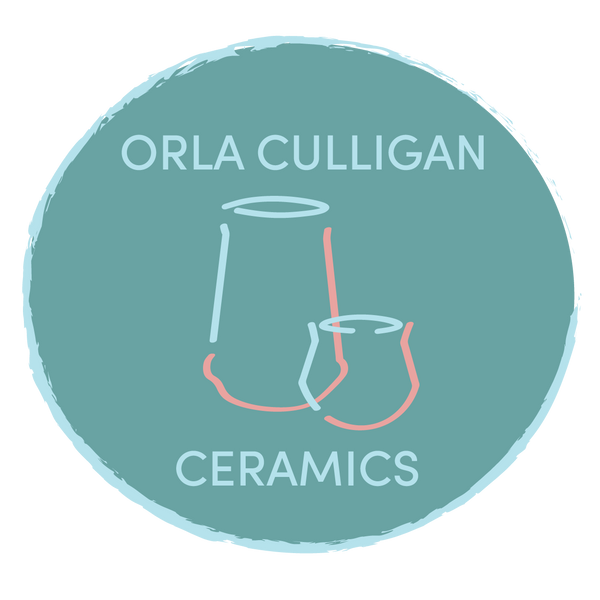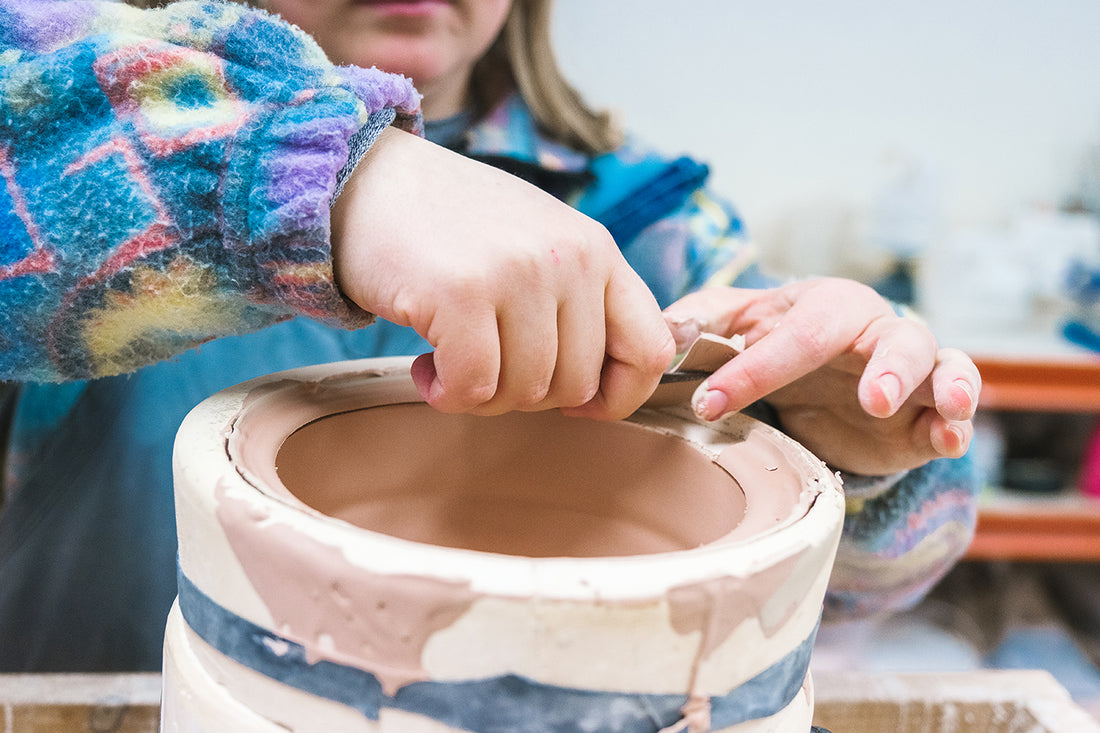
My designs take a quirky twist by borrowing shapes from man-made treasures such as bottle or buoys found along the stunning Irish coastline. I craft these designs through tracing images of these objects and collaging them into something new, followed by shaping them into models using a plaster lathe. 
The magic continues as I create moulds ranging from simple to intricate designs. Moulds are then made from these models, ranging from two-piece to five-piece moulds. Slip casting, a method typically used for pottery mass-production, is employed by pouring coloured stoneware slip into the plaster moulds.

The vibrant hues come alive by adding stains to the slip and casting them in layers. Each piece goes through an initial bisque firing, followed by a glossy glaze finish, resulting in a sleek, touchable texture. The grand finale? A stunning piece of contemporary Irish ceramics, fit for your daily adventures!

If you or a friend are interested in learning more about this I do offer an evening course check it out here - https://orlaculliganceramics.com/collections/workshops
This ceramic course is perfect for anyone interested in exploring the world of ceramics, whether you're a beginner or an experienced artist. You'll start by learning about mould making materials and techniques, and then move on to creating your own one-piece moulds.
Once you've created your moulds, you'll learn how to pour and cast liquid clay into them, creating beautiful and functional cups and bowls. In addition to creating your own pieces, you'll also have the opportunity to experiment with decorating techniques such as underglaze, slip trailing, and sgraffito, as well as glazing methods to add colour and texture to your pieces. By the end of the course, you'll have gained a solid foundation in mould making and slip casting, and will have created a beautiful set of handmade ceramics to enjoy for years to come.

